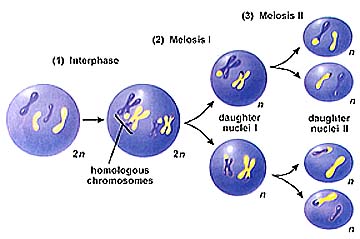Meiotic Fictions: Hybridity and the Reproduction of the New [1]
Nicole Matos

As [Nancy] Stepan suggests, without an understanding of genetics, "the role of hybridization in evolution was too difficult a problem for Darwin to solve." — Robert Young, Colonial Desire
[1] Most compelling, to me, of all aspects of Paul Gilroy's extraordinary The Black Atlantic is the impression it makes, early on, of a work ransacking at the limits of critical language and insisting that it comes up short. I want to talk about, or in the space of, that text seems to say, what we usually call hybridity, and also many other things — "creolization, metissage, metizaje" (2); "the stereophonic, bilingual or bifocal" (3); "the rhizomorphic, fractal" (4); "the transnational, intercultural, and syncret[ic]" (15) — but remain, it continues, dissatisfied with these "manifestly inadequate theoretical terms" (15). This in and of itself is nothing new — in recent years, both the case against hybridity as an unproblematic master trope for visions of cultural amalgamation and syncretism, and the overall sense of a frustrating scarcity of more satisfying possibilities to put in its place, seem fairly well established. But Gilroy's finest move, his text's deliverance, lies finally in substituting for the sign a symbol and for the metaphor a shape: the ship in motion, the Atlantic contours. In this essay, too, I'd like to rummage through manifestly inadequate theoretical terms, dissatisfied, and ultimately offer my own shape: a scattering of runes, an open weave. [2]
[2] That hybridity has been a concept much-contested in its literary and cultural applications does not much detract from its extraordinary persistence in exactly these applications — sheepish and hangdog, sure, but apparently still a habit hard to break. I'd like to suggest that hybridity's uneasy status — as a kind of attractive nuisance that nonetheless continues to attract — has much to do with the equally uneasy, and yet still relatively unexamined, status of genetic science within our current literary and cultural imaginary. Compromised by its association with eugenics, nuclear physics, and biological determinism, instigating, in Jose Van Dijck's words, "profound agitation over the integrity of the human body and the corrosion of human identity" (7), genetic science has nonetheless captured the public imagination profoundly, viscerally, and likely irreversibly. The fierceness of collective fears and fantasies over reproductive technology and genetic manipulation only proves the point that, for better or for worse, genetic structures have "replac[ed] the cell or the organism as the locus of vital activity...[T]he genetic make-up represents the deep structure of inner life that has traditionally been met with awe, mystification, and veneration" (Van Dijck 6-7). Hybridity continues to attract, while its many perfectly logical supplements have fallen rather flat, I'd argue, because it is a biological, genetic metaphor, and though we might not like molecular biology, as a synecdoche for the self we (mostly, somehow) believe in it.
[3] It is my suggestion, then, that the problem of the hybrid metaphor might best be engaged not by attempting to circumvent associations with literal processes of reproduction and the biological life of the body — associations that may always exert an intuitive "natural" attraction — but by returning to and mining more thoughtfully other, related paradigms that better suit selected conceptual purposes. The energy of the genetic imaginary, what Van Dijck self-titles "imagenation," could then be reclaimed by postmodern and postcolonial critics in its most dynamic form — as symbol, as shape, as a repertoire of forms for thinking-through, "spatial territory no one before has laid eyes on" (111).
[4] The specific biological shape I would like to explore here as a supplement to hybridity, one that retains a connection with the literal mechanics of genealogy but that illuminates more finely the visions of writers interested in the most generative versions of hybridity, is that of meiosis: the process by which sexually-reproducing organisms produce cells appropriate for eventual genetic exchange. This paradigm, rooted in a more accurate understanding of "hybridity's" reproductive genetics, might more closely approximate the spirit of what such theorists as Robert Young and Homi Bhabha seem to be positing — a hybridity that produces transgressive novelty, a novelty that paradoxically produces itself within or of the materials of a static past. Moving from a hybrid metaphor to a meiotic metaphor might also better illustrate the visions of amalgamation and syncretism specific to such writers as Italo Calvino, Salman Rushdie, and Robert Antoni. For Antoni in particular, meiosis may also illustrate a vision of literary method and form approaching a new frontier, a genetic art that blurs fictional and empirical truths in the service of regeneration and self-reclamation, an art that then fully accounts for (what I would call) the reproduction of the new.
[1] See The Gambler. 1995, etching. Frank Moore. Reproduced in "Divergent Lineages: Contemporary Art and the Genetic Code." Art Journal 55.1 (1996). 13. Shows a gambler's "hand" of DNA playing cards.
[2] See Figure 19, «http://www.drosophilahistory.com/stagesofmeiosis-novitski/body.html». Shows runic pattern of dividing chromosomes; Figure 5.19, page 101, Biology: Science and Life. ed. Michael R. Cummings. Minneapolis: West Publishing, 1996. Shows thread-like fibers of chromosome chiasmus.
